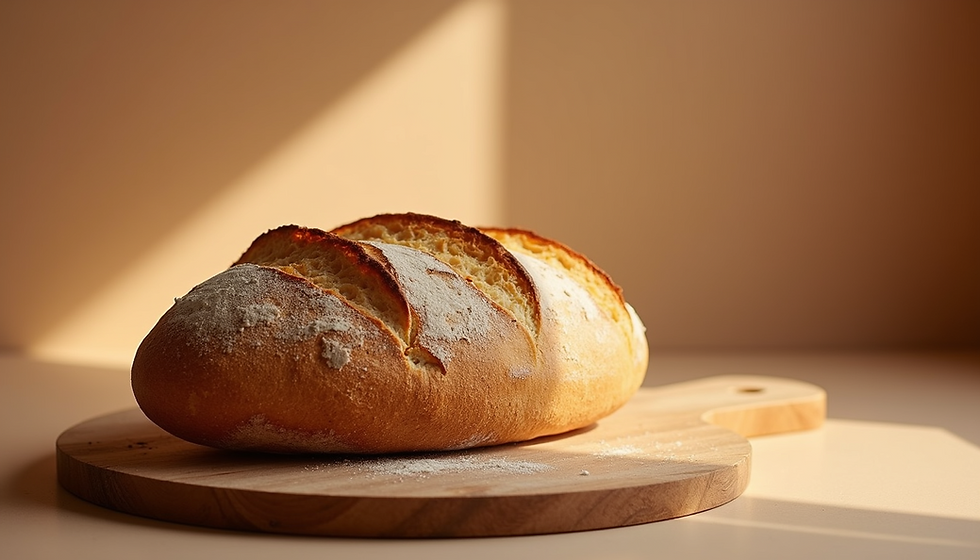The Science Behind Fluffy Sourdough Starter
- Monica & Mikayla
- May 21
- 2 min read
Sourdough bread baking is an age-old tradition that has gained popularity in recent years for its delicious taste and health benefits. A key component of baking sourdough bread is the starter, a mixture of flour and water that captures wild yeast and beneficial bacteria to leaven the bread. Among the various types of starters, the fluffy sourdough starter has been a subject of fascination for many bakers due to its light and airy texture, which can result in a soft and tender loaf.

But what exactly is the science behind achieving a fluffy sourdough starter? Let’s delve into the details. The key to a fluffy sourdough starter lies in the cultivation of a strong and active microbial community, consisting of wild yeast and lactobacilli bacteria. These microorganisms work together during the fermentation process to produce carbon dioxide gas, which gives the sourdough bread its characteristic rise and texture. To create a fluffy sourdough starter, it is essential to provide the right conditions for the wild yeast and bacteria to thrive. This includes maintaining a consistent feeding schedule, using the right flour-to-water ratio, and ensuring the starter is kept at an optimal temperature. Regular feedings help to refresh the microbial population and keep it healthy and active, while a warm environment encourages faster fermentation and gas production. Additionally, the choice of flour can also impact the texture of the sourdough starter. Flours with higher protein content, such as bread flour or whole wheat flour, can provide more food for the microorganisms and contribute to a stronger gluten structure, which in turn helps to trap the carbon dioxide gas produced during fermentation. This can result in a lighter and fluffier starter. Incorporating techniques like regular stirring and maintaining a consistent hydration level can also help to develop a fluffy sourdough starter. Stirring the starter helps to distribute the microorganisms evenly and introduce oxygen, which can promote their growth and activity. Keeping the hydration level of the starter consistent ensures that the microorganisms have enough water to carry out fermentation effectively. In conclusion, achieving a fluffy sourdough starter is a result of understanding the science behind fermentation and creating the right conditions for the wild yeast and bacteria to thrive. By following proper techniques and paying attention to details like feeding schedules, temperature, flour choice, and hydration levels, bakers can cultivate a strong and active microbial community that will ultimately lead to a light and airy sourdough starter, and delicious fluffy bread loaves.



Comments